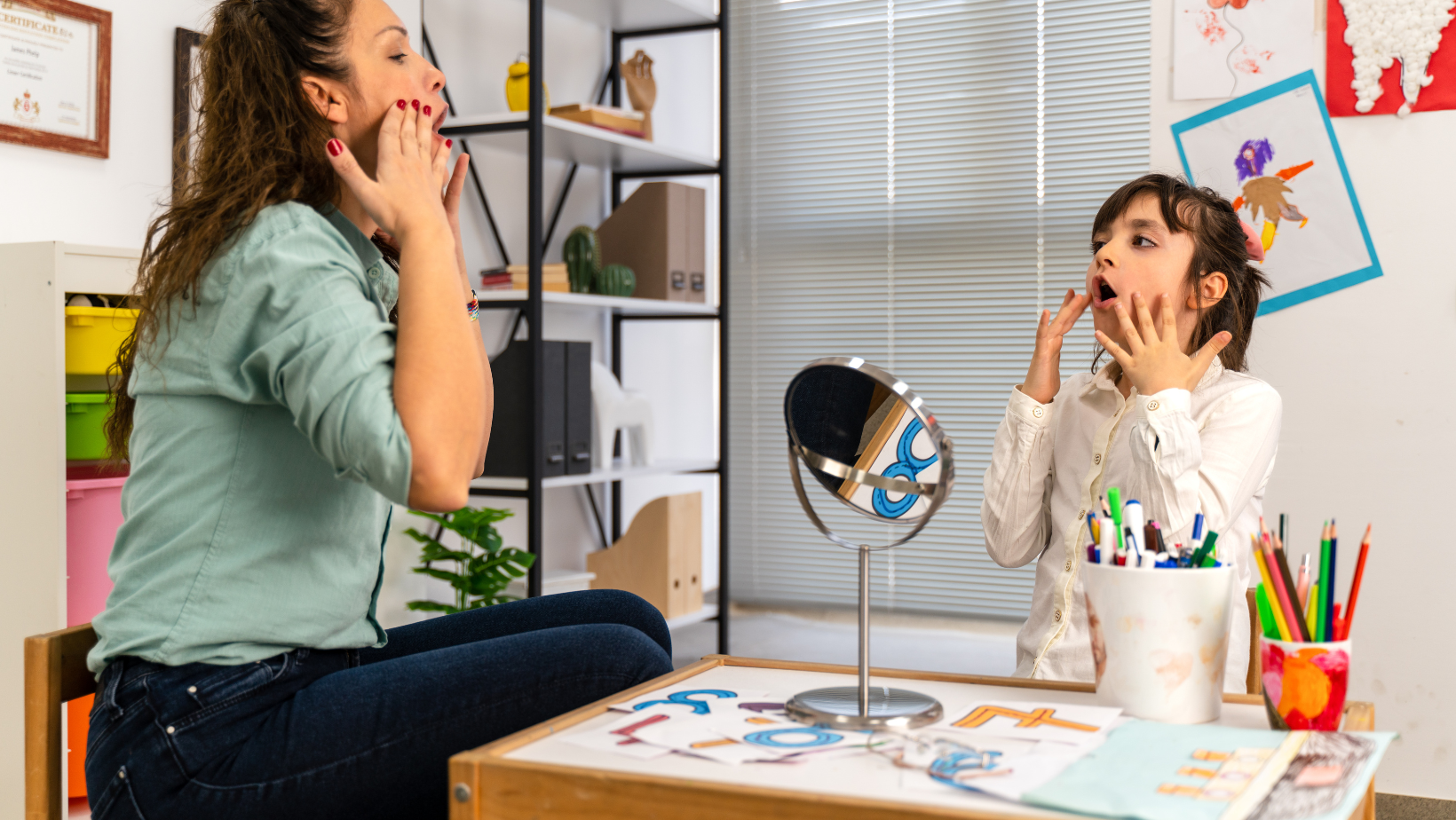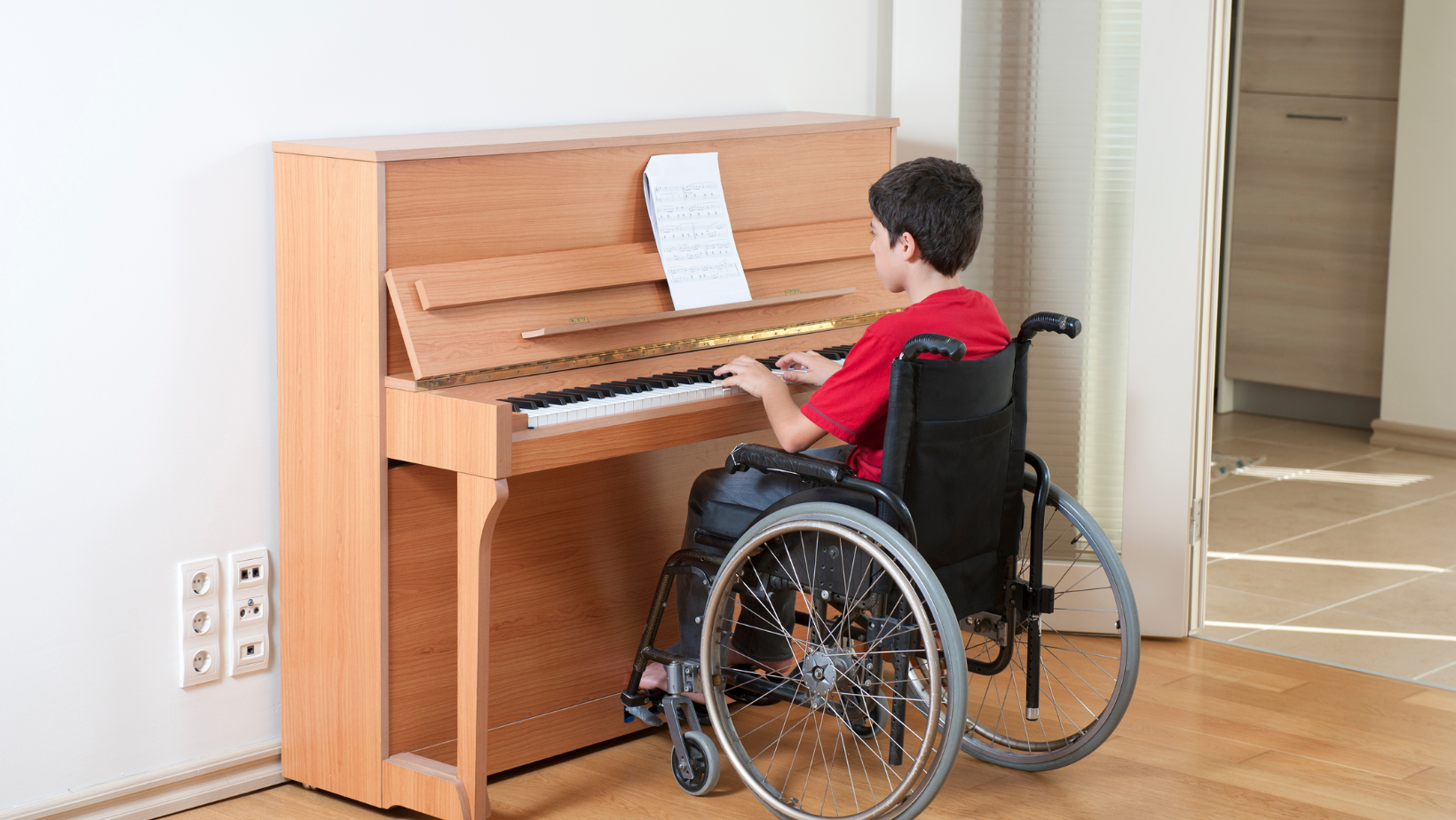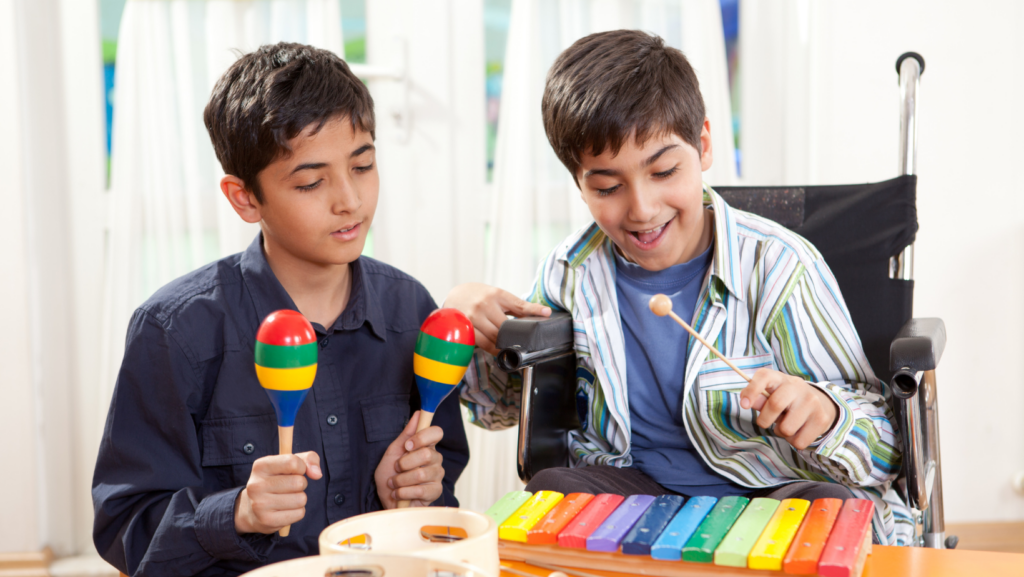Music therapy’s transformative power has been recognized across various fields, but its impact on autism spectrum disorders is particularly profound.
Stay tuned as we delve into this fascinating topic, uncovering the science, the success stories, and the potential that lies within the melody.
Music Therapy for Autism
What Is Music Therapy?
Music therapy for autism stands as an established health profession that employs musical experiences and the relationships forming through them as powerful forces for change in a variety of situations including autism. Music therapists expertly guide these interactions, drawing upon the unique interplay of music’s complexity and resonance with human physiology.
How It Benefits Autism Spectrum Disorder
 In the context of music therapy for Autism Spectrum Disorder (ASD), music therapy’s diverse tools prove significantly advantageous. The non-threatening musical medium tranquilizes the hypersensitive autistic senses, forging an ideal environment for communication and connection stimulation. Many individuals with ASD possess exceptional abilities in pitch perception and music memory, potentially transforming music therapy into a realm of fascination and engagement.
In the context of music therapy for Autism Spectrum Disorder (ASD), music therapy’s diverse tools prove significantly advantageous. The non-threatening musical medium tranquilizes the hypersensitive autistic senses, forging an ideal environment for communication and connection stimulation. Many individuals with ASD possess exceptional abilities in pitch perception and music memory, potentially transforming music therapy into a realm of fascination and engagement.
In specific terms, music therapy tends to have several distinct benefits for autism. The most significant benefit comes in the area of communication. The rhythmic component of music is a powerful tool that can help manage and stimulate speech, in some cases even replace it. The repetitive quality of music can cultivate a secure, predictable space, encouraging the development of communication skills.
Integrating Music Therapy into Daily Routines
Transitioning music therapy into the everyday routines of individuals with Autism Spectrum Disorder (ASD) can manifest in a multitude of ways. Inclusion within home environments and school programs are prime examples. By offering subtle opportunities for learning and development wrapped in enjoyable musical experiences, these settings foster a pleasant environment for therapy.
Music at Home
 Incorporating music therapy into a home setting offers an environment of comfort and familiarity that enhances the effectiveness of the therapy sessions. Routines like listening to calming melodies at bedtime, engaging in musical games during playtime, or singing familiar songs during bathtime are good examples.
Incorporating music therapy into a home setting offers an environment of comfort and familiarity that enhances the effectiveness of the therapy sessions. Routines like listening to calming melodies at bedtime, engaging in musical games during playtime, or singing familiar songs during bathtime are good examples.
In the realm of education, integrating music therapy into school programs amplifies the chance of improvement in students with ASD. By including it within physical education classes, it boosts their motor abilities, and the rhythmic components of the music assist with their speech development.
Core Techniques of Music Therapy
Music therapy for autism individuals employs an array of strategies, each addressing specific developmental obstacles. Key techniques entail active Musical Interaction and innovative Creating and Composing.
Musical Interaction
Musical Interaction signifies a crucial point in music therapy. Engaging clients in interactive musical activities, therapists introduce a shared rhythmic space. It not only spurs motor coordination but also encourages much-needed social integration.
To illustrate, the therapist and client, with tambourines in their hands, might play in unison, matching each other’s tempo. This sequential action relies on keen observation, reciprocal communication, prompt response, and collaboration, fostering critical social skills.
Creating and Composing
 Boosting creativity is another central approach in therapeutic settings. By involving ASD individuals in the act of Creating and Composing, therapists provide them an outlet for emotional expression and foster cognitive development.
Boosting creativity is another central approach in therapeutic settings. By involving ASD individuals in the act of Creating and Composing, therapists provide them an outlet for emotional expression and foster cognitive development.
To relay a practical example, consider a session wherein the client is provided with numerous instruments and asked to craft a unique tune. This challenging venture prevents feelings of inertia, stimulates imaginative thinking, and enhances problem-solving abilities. Additionally, it bolsters their sense of autonomy and self-esteem.
Music therapy for autism has a transformative power for individuals with Autism Spectrum Disorder (ASD) is undeniable. It’s not just a theory but a practice supported by research, case studies, and real-life success stories. It’s a tool that unlocks communication abilities and nurtures social and motor skills. The impact of music therapy isn’t confined to therapy sessions but extends to daily routines and school programs. It’s a beacon of hope for individuals with ASD, offering them a chance to connect, communicate, and live more fulfilling lives.

